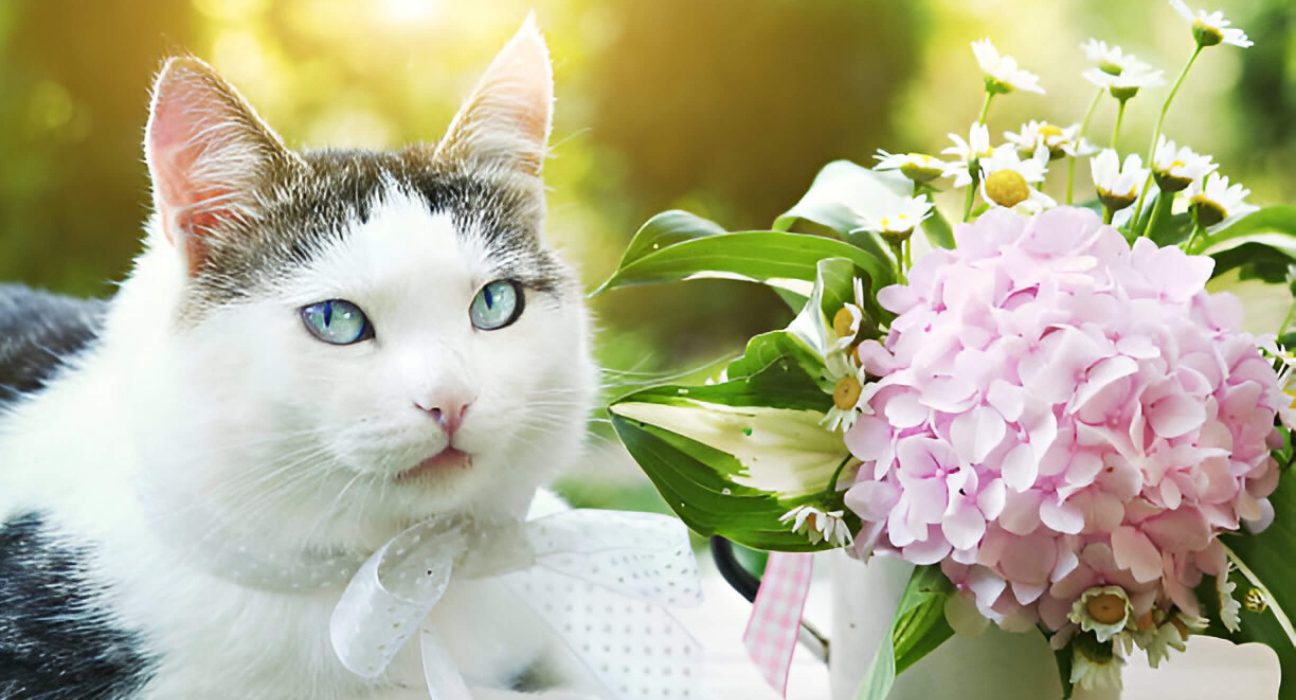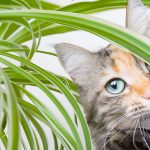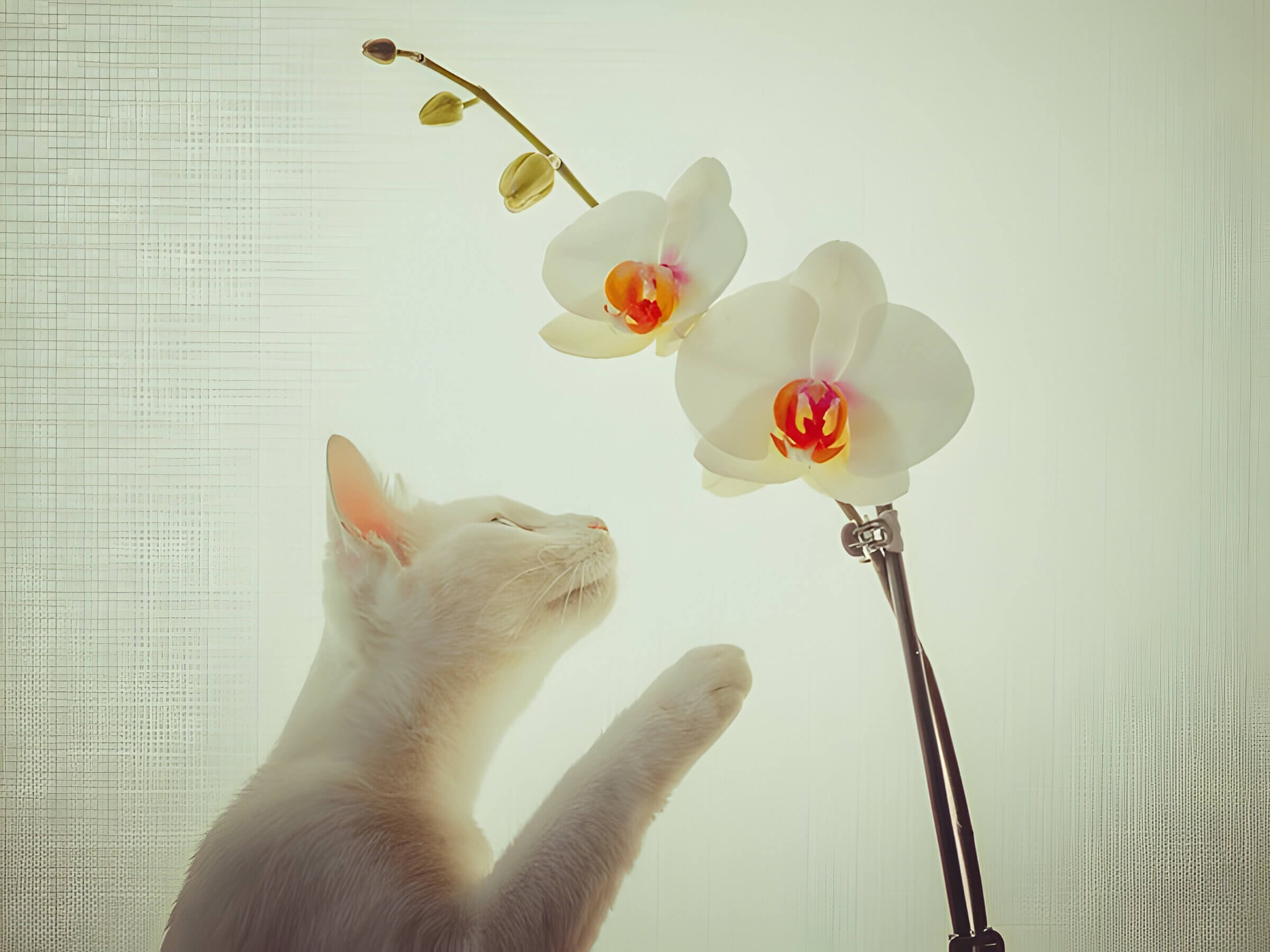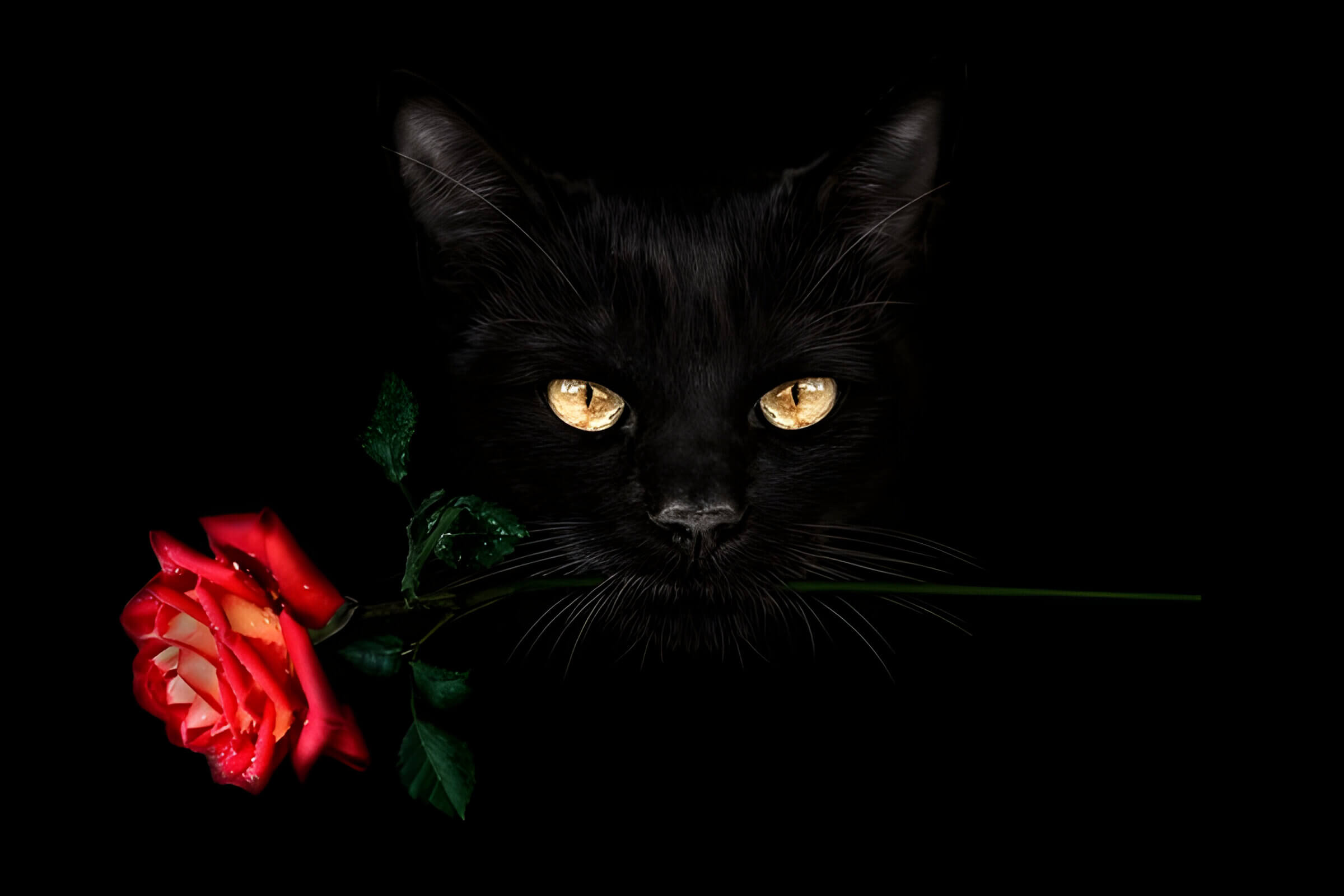Hydrangeas, with their beautiful blooms and lush foliage, are a popular choice for gardens and indoor decor. However, cat owners should be aware that these plants pose a potential threat to their feline companions. Hydrangeas contain cyanogenic glycosides, compounds that can release cyanide when ingested. This toxicity makes them poisonous plants for cats and other pets.
Symptoms of Hydrangea Poisoning in Cats
Hydrangea poisoning in cats can lead to several concerning symptoms that pet owners should be aware of. When a feline ingests parts of the hydrangea plant, particularly the leaves and flowers, they may experience gastrointestinal distress as the primary sign of toxicity. This can manifest as vomiting, which may be frequent and contain partially digested plant material. Accompanying the vomiting, cats might also suffer from diarrhea, further contributing to their discomfort.
Another notable symptom is lethargy in pets affected by hydrangea ingestion. Cats may appear unusually tired, weak, or uninterested in their surroundings. This lack of energy can be a clear indicator that something is amiss with your feline companion. In some cases, cats may also show signs of depression or loss of appetite.
It’s crucial for cat owners to monitor their pets closely if hydrangea ingestion is suspected. Additional symptoms may include increased thirst, excessive drooling, and difficulty breathing in severe cases. If you observe any of these cat poisoning symptoms after potential hydrangea exposure, it’s essential to seek veterinary care promptly to ensure your pet receives appropriate treatment and support.
Which Parts of the Hydrangea Plant Are Most Dangerous?
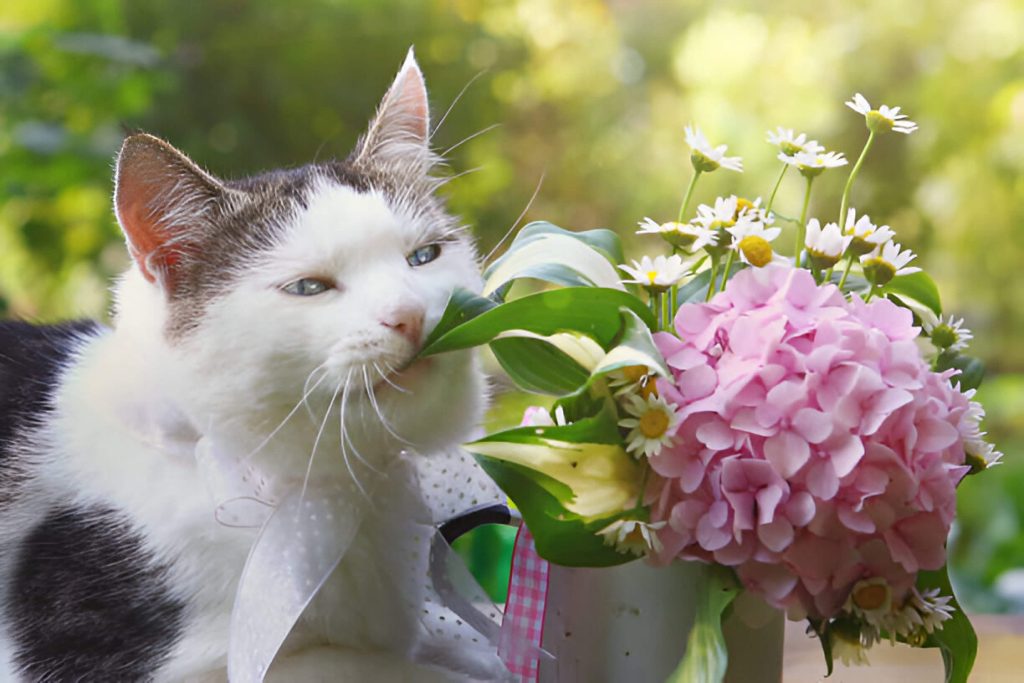
While hydrangeas are beloved for their stunning blooms, it’s crucial to understand which parts of the plant pose the greatest risk to pets and humans. The most toxic components of hydrangeas are found in the leaves, buds, and flowers. These parts contain cyanogenic glycosides, which can release cyanide when ingested. The concentration of these compounds is highest in the flower buds, making them particularly dangerous if consumed.
Hydrangea flowers, despite their beauty, also contain these toxic substances, albeit in slightly lower concentrations than the buds. The leaves, while less toxic than the flowers and buds, still pose a risk, especially if ingested in large quantities. It’s worth noting that the woody stems and roots contain lower levels of toxins, but they can still cause mild symptoms if chewed or consumed.
For cat owners, it’s essential to be vigilant, as curious felines may be attracted to the plant’s foliage and flowers. While severe poisoning from hydrangeas is rare, ingestion can lead to gastrointestinal upset, lethargy, and in extreme cases, more serious symptoms. To ensure the safety of pets and children, it’s advisable to keep hydrangeas out of reach or opt for pet-friendly alternatives in your garden or home decor.
What to Do If Your Cat Eats Hydrangeas
If your cat has ingested hydrangeas, it’s crucial to act quickly. These plants contain cyanogenic glycosides, which can be toxic to felines. First, remove any remaining plant material from your cat’s mouth and surrounding area. Monitor your pet closely for symptoms such as vomiting, diarrhea, lethargy, or difficulty breathing. Contact your veterinarian or a pet poison control hotline immediately for professional guidance.
While waiting for professional help, do not induce vomiting unless specifically instructed to do so by a veterinarian. Offer your cat fresh water to help flush out toxins, but don’t force them to drink. Keep a sample of the plant or take a clear photo to aid in identification if needed.
In severe cases, emergency veterinary care may be necessary. First aid measures at home can be helpful, but they are not a substitute for proper medical treatment. Always err on the side of caution when dealing with potential plant poisoning in cats, as prompt action can make a significant difference in the outcome.
Preventing Hydrangea Poisoning
Cat owners who love both their feline friends and hydrangeas need to be aware of the potential risks these beautiful plants pose. To prevent hydrangea poisoning in cats, consider implementing these safety measures:
Cat-proofing gardens: If you have hydrangeas in your outdoor space, create barriers using fencing or netting to keep cats away from the plants. Alternatively, designate a separate cat-friendly area in your garden with safe plants and engaging features to distract them from harmful flora.
Indoor plant safety: For those with indoor hydrangeas, place them in areas inaccessible to cats, such as high shelves or hanging baskets. Be mindful of fallen leaves or flowers that curious cats might investigate.
Alternative pet-friendly plants: Consider replacing hydrangeas with cat-safe alternatives like catnip, cat grass, or spider plants. These options can satisfy your cat’s plant-nibbling tendencies without risking their health.
Deterring cats from plants: Use natural deterrents like citrus peels or commercial pet-repellent sprays around your hydrangeas to discourage cats from approaching. You can also try placing aluminum foil or double-sided tape near the plants, as cats dislike these textures.
By implementing these strategies, cat owners can enjoy the beauty of hydrangeas while ensuring their feline companions remain safe and healthy.
Safe Alternative Cat-Friendly Plants for Your Home and Garden
When creating a pet-friendly environment, it’s crucial to choose plants that are safe for your feline companions. Fortunately, there are numerous cat-friendly options for both indoor and outdoor spaces. For your home, consider non-toxic houseplants such as spider plants, Boston ferns, and African violets. These not only add a touch of greenery but also purify the air without posing a risk to your curious cats.
In your garden, opt for pet-safe flowers like zinnias, sunflowers, and petunias. These colorful blooms will enhance your outdoor space while ensuring your cats can safely explore. For cat-friendly gardening, incorporate herbs like catnip, cat grass, and valerian, which are not only safe but also enjoyable for felines.
When planning your landscaping, choose safe alternatives to common toxic plants. Replace lilies, which are highly poisonous to cats, with pet-safe options like roses or gerbera daisies. Additionally, create designated cat-friendly areas in your garden with soft grasses and sheltered spots for lounging.
By carefully selecting non-toxic plants and flowers, you can create a beautiful, thriving environment that’s safe for both you and your feline friends to enjoy.
Understanding Plant Toxicity Levels and Your Cat’s Risk
Understanding plant toxicity levels is crucial for cat owners to ensure their feline friends’ safety. The ASPCA poison list is an invaluable resource that categorizes plants based on their toxicity to cats, dogs, and horses. This comprehensive database helps pet owners identify potential hazards in their homes and gardens.
Plant toxicity scales typically range from mild to severe, with some plants causing minor digestive upset while others can lead to life-threatening conditions. When assessing the risk for your cat, consider factors such as the plant’s location, your cat’s access to it, and its toxicity level.
Common toxic plants that pose a significant risk to cats include lilies, sago palms, and azaleas. Lilies, in particular, are extremely dangerous, as even small ingestions can cause severe kidney damage. On the other hand, plants like spider plants and catnip are generally safe for felines.
To minimize risks, conduct a thorough inventory of your indoor and outdoor plants, cross-referencing them with the ASPCA poison list. Remove highly toxic plants from your cat’s environment and consider replacing them with pet-safe alternatives. Remember, prevention is key in protecting your cat from plant-related health issues.
Balancing Beautiful Gardens with Cat Safety
In conclusion, while hydrangeas are indeed toxic to cats, the severity of poisoning is generally mild to moderate. Cat owners who love these beautiful flowering shrubs need not completely abandon their gardening aspirations. Instead, a balanced approach that prioritizes both aesthetic appeal and pet safety is key.
To create a cat-friendly garden that includes hydrangeas, consider implementing the following strategies:
- Strategic placement: Plant hydrangeas in areas less accessible to cats, such as elevated beds or behind fences.
- Supervision: Monitor your cat’s outdoor activities, especially when they’re near hydrangeas.
- Alternative plants: Incorporate cat-safe plants throughout your garden to provide safe options for curious felines.
- Deterrents: Use natural, pet-safe repellents around hydrangeas to discourage cats from approaching.
- Indoor alternatives: Consider growing hydrangeas in indoor spaces inaccessible to your cats.
By taking these precautions, you can enjoy the beauty of hydrangeas while ensuring your feline companions remain safe. Remember, if you suspect your cat has ingested any part of a hydrangea plant, contact your veterinarian immediately for guidance. With careful planning and awareness, it’s possible to create a stunning garden that’s also a safe haven for your beloved pets.



